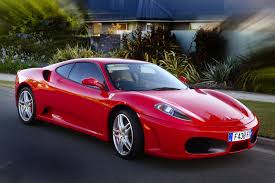Ferrari Plans to Transform Most of its Cars to a Hybrid Model by 2022
- Published | 19 September 2018
Ferrari, the Italian Sports car manufacturer, is planning to launch most of its car in the hybrid model that will run on both petrol and electricity.
Global: Ferrari, being hit with increasing anti-emission regulations across the world, is planning to adopt a plug-in hybrid system in order to combine the amount of pure electric driving with lower CO2 emissions. They have announced that almost 60% of the models will be built on this hybrid model, including its first SUV, Purosangue. The decision of Ferrari clearly shows that electric vehicles has to be on the top of list for all the automobile makers. Thus, the hybrid model of car will also have a positive impact on the electric vehicle market.
 The upcoming wave of electric vehicles in the automobile market, has influenced the decision of all the major automobile vehicle players. Keeping that in mind, the luxury car maker has decided to move towards a hybrid model of electric vehicle. As per Louis Camilleri, the CEO of Italian luxury sports car maker Ferrari, “By 2022, nearly 60 percent of the models we produce will be built around hybrid powertrains.” He further added, “It just does not sit well with our brand and all that it represents,” and harped on the point that the new design will "redefine expectations". The advantage of these hybrid cars over the others will be that buyers will have a choice of either a gas-electric hybrid or a proper internal-combustion engine. Moreover, the cars will be capable of all-wheel drive and the wheels will receive their motive force by way of a double-clutch transmission.
According to the market insight of BlueWeave Consulting, Dynamic market uptake of electric vehicles has occurred in recent years. On-going support and commitments for increased deployment of EVs from policy makers and the automotive industry suggest that this trend is not going to abate in the coming decade. In fact, increased sales volumes together with growing competition in the development of new technologies are likely to contribute to continuous reductions in the cost of manufacturing batteries – the most important cost component for Electric Vehicles. Cost reductions in EV-related technologies further strengthen their competitiveness compared with internal combustion engine vehicles. This reinforces the case for road Electric Vehicles taking an expanding market share, and perhaps a leading role in the evolution of transportation across all modes. In the light of this, the decision from Ferrari has to be considered as a move toward the upcoming wave of the popularity of Electric Vehicles.
According to a recently published report of BlueWeave Consulting, on “Global Electric Commercial Vehicles, 2016-2018”, the market is expected to expand over a CAGR of 12% during the forecast period, owing to stringent regulations from government to control the CO2 emission as an environment-friendly move. Moreover, the development of batteries for consumer electronics provided invaluable experience for the production of lithium-ion (Li-ion) cells that facilitates grown production and justified considerable investment in research and development, leading to significant cost reductions and improved performance. Thus, the growth of electric commercial vehicles has the potential to contribute to the increasing production and sales of automobiles.
The upcoming wave of electric vehicles in the automobile market, has influenced the decision of all the major automobile vehicle players. Keeping that in mind, the luxury car maker has decided to move towards a hybrid model of electric vehicle. As per Louis Camilleri, the CEO of Italian luxury sports car maker Ferrari, “By 2022, nearly 60 percent of the models we produce will be built around hybrid powertrains.” He further added, “It just does not sit well with our brand and all that it represents,” and harped on the point that the new design will "redefine expectations". The advantage of these hybrid cars over the others will be that buyers will have a choice of either a gas-electric hybrid or a proper internal-combustion engine. Moreover, the cars will be capable of all-wheel drive and the wheels will receive their motive force by way of a double-clutch transmission.
According to the market insight of BlueWeave Consulting, Dynamic market uptake of electric vehicles has occurred in recent years. On-going support and commitments for increased deployment of EVs from policy makers and the automotive industry suggest that this trend is not going to abate in the coming decade. In fact, increased sales volumes together with growing competition in the development of new technologies are likely to contribute to continuous reductions in the cost of manufacturing batteries – the most important cost component for Electric Vehicles. Cost reductions in EV-related technologies further strengthen their competitiveness compared with internal combustion engine vehicles. This reinforces the case for road Electric Vehicles taking an expanding market share, and perhaps a leading role in the evolution of transportation across all modes. In the light of this, the decision from Ferrari has to be considered as a move toward the upcoming wave of the popularity of Electric Vehicles.
According to a recently published report of BlueWeave Consulting, on “Global Electric Commercial Vehicles, 2016-2018”, the market is expected to expand over a CAGR of 12% during the forecast period, owing to stringent regulations from government to control the CO2 emission as an environment-friendly move. Moreover, the development of batteries for consumer electronics provided invaluable experience for the production of lithium-ion (Li-ion) cells that facilitates grown production and justified considerable investment in research and development, leading to significant cost reductions and improved performance. Thus, the growth of electric commercial vehicles has the potential to contribute to the increasing production and sales of automobiles. Related Blog
- Prebiotics consumption expands in food and beverage applications...
- Online education industry – How has COVID-19 impacted the growth dynamics
- Lithium ion batteries continue to gain phenomenal traction in the automotive sector...
- Personal Protective Equipment Industry – 6 Major Application Sectors Driving...

